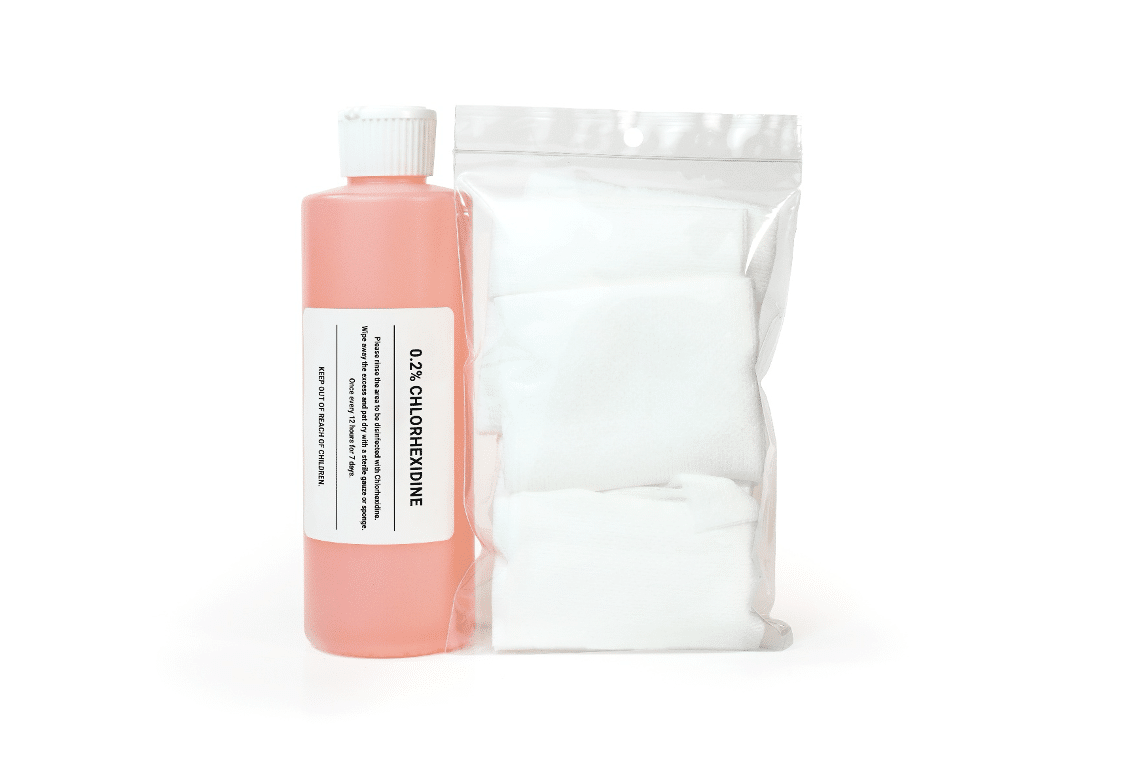Menu
Federal Circuit Invalidates “Sterile” Patent Claims
October 16th, 2025
The Federal Circuit has affirmed decisions by the Patent Trial and Appeal Board (PTAB or Board) invalidating all challenged claims of two patents for a sterilized chlorhexidine product in an applicator package for disinfecting skin.
The Federal Circuit agreed with the PTAB’s conclusion on the meaning of the term “sterile.”
The case is Sage Products, LLC v. Stewart.
As the court explained,
Sage’s U.S. Patent Nos. 10,398,642 (“’642 patent”) and 10,688,067 (“’067 patent”) are both entitled “Sterilized Chlorhexidine Article and Method of Sterilizing a Chlorhexidine Article.” …
The patented invention relates to a sterilized chlorhexidine product in a package, such as an applicator filled with an antiseptic composition for disinfecting skin.
At issue on appeal were certain claims, including variations on the word “sterile.” For example:
A sterilized chlorhexidine product for topical disinfection, said sterilized chlorhexidine product comprising:
a sterilized chlorhexidine gluconate composition;…
a sterilized odorant, a sterilized colorant, …
The sterilized chlorhexidine product of claim 1, wherein said sterilized chlorhexidine article has a sterility assurance level [SAL] of from 10-3 to 10-9.
[Emphasis added by court.]
The patent specification recites that a product may be referred to as “sterilized”, “where such sterility can be validated.”
The Board relied on four key pieces of prior art in determining that Sage’s claims were unpatentable.
The first was the ChloraPrep Public Assessment Report (PAR), a publication of the United Kingdom’s Medicines and Healthcare Products Regulatory Agency.
Another prior art reference the Board relied on was U.S. Patent Application Publication 2015/0190535, “Systems, Methods, and Devices for Sterilizing Antiseptic Solutions” (“Degala”).
The Board also looked to the British Standard EN 556-1 (“BS EN-556-1”), which establishes the UK’s requirements for labeling a medical device as being sterile.
BS EN-556-1 specifies that, to designate a terminally sterilized device as “sterile,” the “probability of there being a viable micro-organism on/in the device shall be equal to or less than 1 × 10-6.”
During the inter partes review (IPR) proceedings, three grounds were advanced for finding the challenged claims of the patents unpatentable:
- the claims were anticipated by the PAR;
- the claims were obvious over the PAR, given the knowledge of a person of ordinary skill in the art (“skilled artisan”); and
- the claims were obvious over the PAR in view of Degala.
On the second ground, the court noted that
Resolution of this appeal requires us to decide three principal issues:
(1) whether substantial evidence supports the Board’s finding that a skilled artisan would have understood the PAR to describe a “sterilized” composition and “sterilized” product;
(2) whether substantial evidence supports the Board’s additional findings that all elements of each of the challenged claims were also disclosed in the PAR; and
(3) whether the Board committed procedural errors.
Each of the challenged claims in Sage’s patents required a “sterilized chlorhexidine product” or a “sterilized chlorhexidine article” comprising a “sterilized chlorhexidine gluconate composition” (emphasis added by the court).
The court explained that
Sage argued to the Board, and reiterates to us, that the PAR’s use of the term “sterile” stemmed from a mistaken belief – widely shared in the pertinent community of skilled artisans – that the antiseptic composition in ChloraPrep was sterile when, in fact, it was not.
The court noted that
The Board took account of this contention and found that a skilled artisan would have understood the PAR’s references to “sterile” to meet the Board’s construction of “sterilized,” which is “the article/component/composition recited as ‘sterilized’ has been subjected to a suitable sterilization process such that sterility can be validated.”
In this case, the PTAB identified the relevant skilled artisan as
possess[ing] at least an undergraduate bachelor’s degree in the pharmaceutical sciences, pharmacy, biochemistry, microbiology, or a related field, with at least four years of experience with sterilization processes for medical products and their components, as well as familiarity with antiseptics such as chlorhexidine.
Sage didn’t challenge that definition before the Board, but on appeal argued that this definition was erroneous because it did not require the skilled artisan to be familiar with the challenges involved in the sterilization of chlorhexidine gluconate, and also because the Board read into its definition a familiarity with UK regulations that Sage asserted the skilled artisan would lack.
The court noted that the Board faced a factual dispute as to whether the skilled artisan would read the PAR as disclosing “sterilized” products and compositions, as that term is used in the Sage patents.
To resolve this dispute, the Board needed not only to make a finding regarding the definition of a skilled artisan but also to make additional findings regarding the knowledge of such a person.
The court explained that
the Board found that the skilled artisan – who had, as Sage’s expert opined, “at least four years of experience” – would know about the differing regulatory requirements in the United States and the UK. That knowledge would include recognizing that the PAR, an MHRA publication about a UK medical product, would have to satisfy UK regulatory standards, including the BS EN-556-1 standard, to be labeled “sterile.”
The Board had found
it implausible that someone with four years of experience with sterilization processes for medical products and their components would lack familiarity with the regulatory regimes that set the conditions under which the products or processes they work with may be used.
According to expert testimony before the Board,
a skilled artisan having the education and experience required by the Board’s definition would know the differences between the United States and UK regulatory standards for “sterile” and would know, therefore, that the PAR’s references to “sterile” items would satisfy the challenged claims’ requirement for “sterilized” items.
Thus, said the court,
Sage’s contention that the Board allegedly erred by requiring a skilled artisan to know UK regulatory requirements while not needing to know the supposed challenges in sterilizing chlorhexidine products is meritless, as it relies on rejection of the Board’s actual, supported findings.
The court found that the Board didn’t ignore competing evidence, but that it found that Sage’s own evidence was outweighed.
Categories: Patents









